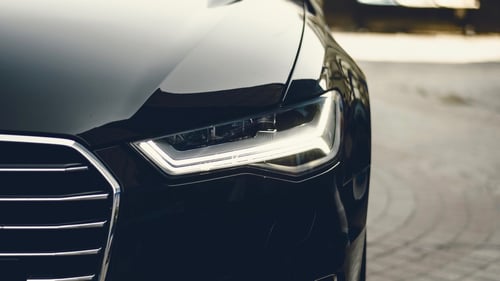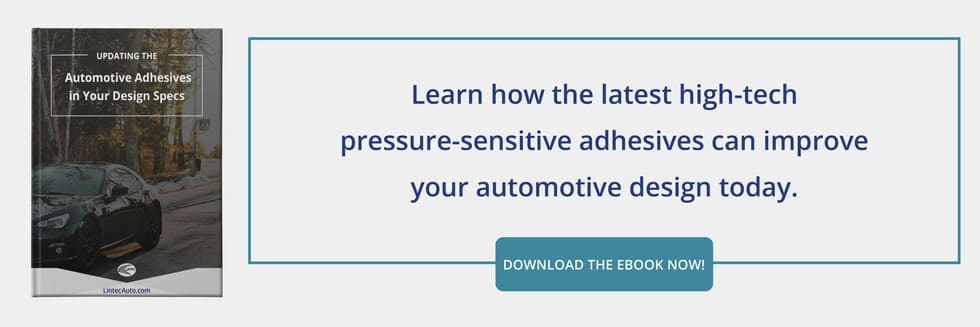Films have an enormous range of applications for automotive manufacturing. They are used as light-filtering window treatments, adhesives to bond parts, a protective shield on blank parts during shipping, chip-resistant tapes for high-impact areas, paint replacements for elements otherwise costly or laborious to paint, and more.
When applied to the vehicle’s body as automotive marking films, however, they’re not only useful as protection, but can also be used as an ideal medium for catching the eye with stylish swoops, stripes, logos, and other visual flourishes.
Marking films for window and body elements can accentuate aesthetic features of the body’s curvature or incorporate more complex designs that celebrate your branding or concept. They can also serve a naturally functional purpose by accelerating cycle times and enabling process flexibility or quick finish changes without requiring huge investments in tooling and equipment.
Meanwhile, metallic films on trim, sashes, and moldings can also improve an automotive’s perceived quality without requiring you to invest in the costs associated with stamped stainless steel or the negative impact on the vehicle’s total weight.
More and more OEMs are moving away from traditional galvanized and chrome plating for decorative purposes since these materials can often become hazards to the environment and worker health. Instead, OEMs are gravitating towards durable plastic alternatives that reduce weight, provide equivalent visual impact, and have a far quicker, safer production process.
However, choosing the right marking film for your material design takes more than simply picking from a wide variety of colors and textures available. Here are a few things to keep in mind while perusing your options:
Durability
Look for marking films that hold up to prolonged exposure to weather, heat, UV exposure, water, and oils. Marking films with these characteristics are ideal for tough automotive environments, especially since many automotive owners would also prefer to wax and wash their vehicles as normal, without fear of damaging the design.
A Quality Release
Marking films require release papers that are capable of forming an adhesive surface which will maintain its form in a wrinkle-free, sag-free condition for a long period of time. Release performance can truly make or break a marking film, especially when it must follow a curvature or irregular surface.
Necessary Width
For stripes and smaller logos, width is less of a priority. For vehicle wrap advertising with large-scale prints and massive images on trains, buses, and cars, however, you’re going to want to ensure that the material you’re considering has the width to accommodate the scope of your project on each portion of the body. Some automotive film materials are durable, vivid, and long-lasting, but intended for narrow form factors, so make sure you keep in mind the kind of width you’re going to need.
Surface Followability
Automotive marking films are different from flat signage in that they must be flexible, form-fitting, and able to follow a curved surface without warping or rippling (especially vehicle wrap films). The choice of adhesive and laminating material can make a huge difference here.
For example, a strong, pressure-sensitive permanent adhesive on flexible PVC and ETFE fluoropolymer-laminated marking films will enable an ideal combination of smooth surface followability, weather resistance, and long-term application.
Whether you’re crafting subtly appealing contours or embellishing a vehicle with full-fledged wrapped artwork, films are a perfect tool for clean, quick, and razor-sharp marking and images on automobiles. Consider them as an alternative to costly chrome trim, a manufacturing yield-booster with a speedy application process, and a reliable decorative element that withstands solvents, rain, salt, and oils.
In consultation with an experienced automotive film supplier, you may even be able to expand the existing possibilities with an R&D department willing to explore a design suited to your customized needs.


